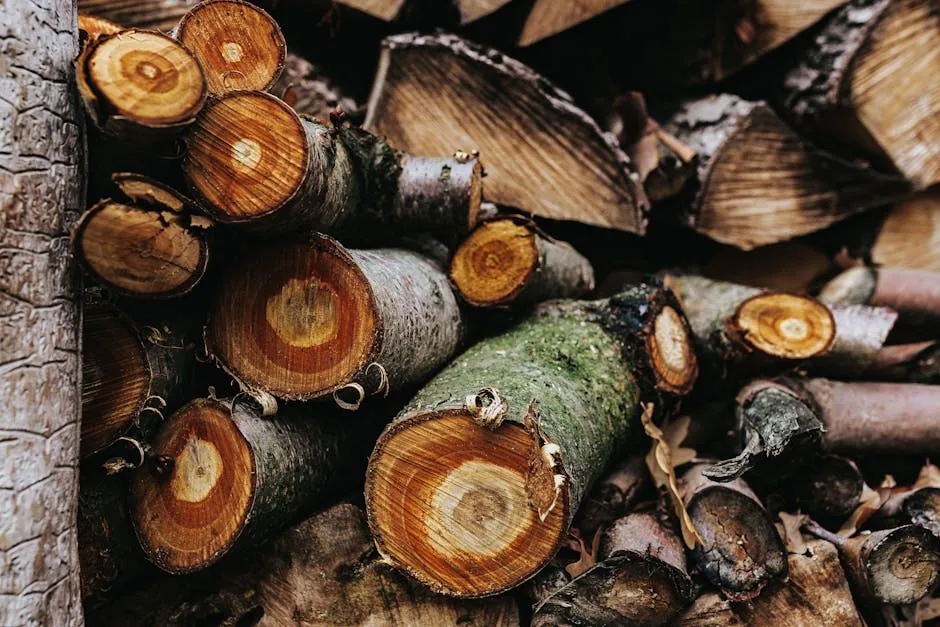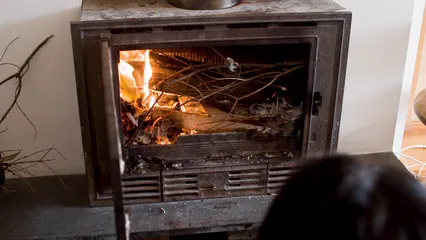
Why Does My Woodstove Soot Up Glass?
Introduction
Have you ever noticed your woodstove glass turning black? This common issue can be frustrating. Not only does it diminish the beauty of your fire, but it can also affect how well your stove operates. Understanding why soot accumulates on the glass is essential. Let’s take a closer look at the causes, solutions, and ways to prevent this from happening. To keep your wood burning experience hassle-free, consider investing in a Wood Stove Glass Cleaner. This product will make cleaning soot a breeze and keep your glass sparkling clear, ensuring you can enjoy the flames without the unsightly residue.Summary and Overview
In this section, we’ll explore the reasons behind soot buildup on woodstove glass. Understanding this issue matters because it impacts both aesthetics and efficiency. By maintaining your stove properly, you can enhance your wood burning experience. We’ll cover key points, including the causes of soot, effective solutions, and essential maintenance tips. If you’re looking for firewood that burns efficiently, consider Seasoned Firewood (Oak or Maple). These hardwoods burn hotter and cleaner, reducing soot buildup and keeping your glass clear longer.
Understanding Soot Accumulation
The Science Behind Soot
Soot is a black powdery substance that forms during combustion. It consists mainly of tiny carbon particles resulting from incomplete burning of wood. When your fire doesn’t reach the right temperature, or there’s inadequate airflow, it leads to incomplete combustion. Consequently, soot forms and settles on the cooler glass surface. This not only obscures your view but can also lead to long-term damage to your stove’s interior. Understanding how soot forms is crucial for keeping your woodstove glass clear and maintaining optimal performance. To monitor your wood’s moisture content and ensure a clean burn, consider investing in a Firewood Moisture Meter. This handy tool helps you ensure that your wood is seasoned properly, preventing excessive smoke and soot from ruining your cozy fires.
Factors Contributing to Soot Build-Up
Fuel Quality
Using seasoned wood is vital for a clean burn. Seasoned wood has lower moisture content, typically below 20%. When wood is too wet, it creates more smoke, leading to increased soot. The moisture in unseasoned wood prevents it from burning efficiently, producing more particulate matter. This soot attaches to the cooler surfaces of your woodstove, including the glass. For best results, aim to use hardwoods like oak or maple, which burn hotter and cleaner. Investing in quality wood can save you from frequent cleaning and improve your stove’s performance. If you’re looking for a clean and efficient way to burn wood, consider using a Firewood Rack. A proper storage solution not only keeps your wood dry but also makes it easy to access when you need it.
Airflow Issues
Proper airflow is crucial for effective combustion. If the airflow is restricted, the fire struggles to burn completely. Insufficient air supply can occur due to closed vents or a clogged chimney. When oxygen levels drop, the fire produces more smoke and soot. This soot accumulates on the glass, obscuring your view of the flames. To maintain good airflow, keep the vents clean and adjust them as needed. A roaring fire needs ample oxygen, so ensure your setup allows for sufficient airflow to keep the flames bright and the glass clear. To help with airflow and enhance your wood burning experience, consider using a Wood Stove Fan. This device helps circulate warm air throughout your space, making your fire more efficient and enjoyable.
Burn Temperature
The temperature at which your wood burns directly influences soot production. When the fire burns too cool, it leads to incomplete combustion. This condition often results in more soot being formed and deposited on the glass. A hotter fire encourages the efficient burning of wood, minimizing smoke and soot. To achieve higher burn temperatures, ensure you’re using dry, seasoned wood and allowing adequate airflow. Regularly check your stove’s settings to maintain optimal temperatures, especially during colder months when you might be tempted to load it up with more wood. To help keep track of your wood stove’s temperature, consider investing in a Wood Stove Thermometer. This handy tool will help you monitor the temperature of your fire, ensuring you maintain optimal burning conditions.
Solutions for Reducing Soot Accumulation
Choosing the Right Wood
To keep your woodstove glass clear, always choose seasoned hardwoods. Good options include oak, maple, and birch. These woods burn hotter and produce less smoke compared to softwoods like pine. Avoid using unseasoned or damp wood, as it leads to inefficient burning and more soot. Aim for wood with a moisture content below 20%. This practice not only reduces soot but also enhances the warmth of your fire, making your woodstove experience much more enjoyable. If you’re looking for a quick and easy way to start your fires, consider a Fire Starter Kit. This will help you get the flames roaring quickly, ensuring a hot fire that minimizes soot production.
Enhancing Airflow
Proper airflow is essential for a clean burn. Ensure that air vents on your woodstove are fully open during ignition. This allows ample oxygen for a hot fire, reducing smoke production. After the fire is established, adjust the vents to maintain a balance. Avoid overly restricting airflow, as it can cause incomplete combustion and soot buildup. Regularly check for any blockages in the chimney or vents to ensure smooth airflow and optimal performance. For an added layer of safety, consider equipping your home with a Carbon Monoxide Detector. This device will alert you to any dangerous buildup of CO, ensuring your home remains safe while you enjoy your cozy fire.
Regular Maintenance Practices
Regular maintenance plays a critical role in reducing soot on glass. Make it a habit to clean your woodstove at least once a month during the burning season. Pay special attention to the glass, removing any soot buildup. Additionally, ensure that the chimney is cleaned annually by a professional. This helps prevent creosote buildup and maintains efficient operation. A well-maintained woodstove not only looks better but also operates more effectively, providing you with a warm and inviting atmosphere. When it comes to cleaning your woodstove, having the right tools is essential. A high-quality Chimney Sweep Brush will help keep your chimney clear and functioning properly, ensuring a safe and efficient burning experience.
Utilizing Airwash Systems
Many modern woodstoves feature airwash systems that help keep the glass clean. These systems work by directing a flow of heated air down the glass surface, preventing soot from settling. To maximize the effectiveness of your airwash, maintain a hot fire with good airflow. If you notice soot buildup despite using an airwash, ensure that the air supply is adequate. A well-functioning airwash system enhances visibility and makes your woodstove experience much more enjoyable.How to Clean Soot from Woodstove Glass
Safe Cleaning Methods
Cleaning soot from your woodstove glass doesn’t have to be a chore. Start by ensuring your stove is completely cool. Use a damp cloth or newspaper dipped in cool ashes to scrub the glass gently. The ash acts as a mild abrasive, helping lift soot without scratching. Alternatively, create a paste with Baking Soda and water. Apply it to the glass, let it sit for a few minutes, and then wipe clean. For stubborn spots, a little Vinegar can work wonders. Always remember to avoid harsh chemicals that could damage the glass.
Recommended Cleaning Products
When it comes to cleaning solutions, you have options. Commercial glass cleaners designed for woodstoves are effective and safe. Look for products specifically labeled for high-temperature glass. If you prefer DIY solutions, a mix of equal parts vinegar and water can do the trick. Another great option is using a mix of water and dish soap. These solutions are gentle yet effective. Just make sure to rinse thoroughly to avoid any residue that might affect your next fire. To make your cleaning routine even easier, consider using a Soot Remover Spray. This product can help break down tough soot deposits and make cleaning a breeze.
Frequency of Cleaning
How often should you clean your woodstove glass? It depends on your usage. If you use your stove regularly, aim for a monthly cleaning during the burning season. However, if you notice soot buildup sooner, clean it as needed. After a particularly smoky fire, a quick wipe might be necessary. Keeping the glass clean not only enhances your view but also maintains the stove’s efficiency. Regular cleaning ensures that your woodstove remains a source of beauty and warmth in your home.
Conclusion
Soot buildup on woodstove glass is a common issue, but you can manage it easily. Understanding the causes, such as fuel quality and airflow, allows you to prevent excessive soot. Cleaning methods and recommended products help you maintain a clear view of your fire. Remember, regular maintenance ensures a more enjoyable wood burning experience. By following these tips, you can keep your woodstove glass clean and functional, enhancing your cozy nights by the fire.FAQs
Why does my woodstove glass go black even with seasoned wood?
Even when using seasoned wood, several factors can cause your woodstove glass to blacken. Airflow issues often play a significant role. If your stove has restricted airflow, it can lead to incomplete combustion. This means that even seasoned wood won’t burn efficiently. The burning techniques you use also matter. For instance, if you add too much wood at once, it can smother the fire. Ensuring proper airflow and using the right burning methods can help keep your glass cleaner.
How can I tell if my wood is seasoned enough?
To check if your wood is seasoned, moisture content is key. Properly seasoned wood should have a moisture level below 20%. You can use a moisture meter for accuracy. Simply insert the probes into the split wood. Another method is the “log test.” If the sound of two logs hitting each other is sharp, the wood is likely dry. If it sounds dull, it may be too wet. Burning well-seasoned wood ensures a cleaner fire and less soot buildup.
What are the signs of a chimney draft problem?
Several indicators can signal a chimney draft problem. If you notice excessive smoke in the room when the stove is in use, this may be a sign. Another indicator is a slow-burning fire that struggles to maintain heat. You might also see soot accumulating on the glass more quickly than usual. A strong, unpleasant smell during operation can also indicate poor draft. Regular chimney inspections can help address these issues before they worsen.
Can using softwood lead to more soot?
Yes, burning softwood can lead to increased soot production. Softwoods, like pine and fir, contain higher resin levels. This resin contributes to more smoke and soot when burned. In contrast, hardwoods such as oak and hickory burn cleaner and hotter. They produce less smoke, resulting in less soot on your glass. If you want a cleaner burn and clearer glass, opt for seasoned hardwoods.
How often should I clean my woodstove glass?
The frequency of cleaning your woodstove glass depends on usage. If you use your stove daily, aim for a monthly cleaning during the burning season. However, if you notice soot buildup sooner, it’s best to clean it as needed. After particularly smoky fires, give the glass a quick wipe down. Regular cleaning not only enhances visibility but also keeps your stove functioning efficiently.
Are there any products that can prevent soot buildup?
Yes, there are products designed to help prevent soot buildup on woodstove glass. Many manufacturers offer specialized glass cleaners formulated for high-temperature use. Additionally, some brands provide additives that you can mix with wood to reduce soot. These products can assist in maintaining cleaner glass and improving burn efficiency. Always choose products specifically intended for woodstoves to ensure safety and effectiveness.
Is it safe to use chemicals on woodstove glass?
When cleaning woodstove glass, it’s crucial to avoid harsh chemicals. Many household cleaners can damage the glass or leave harmful residues. Instead, opt for safe alternatives like a mixture of vinegar and water or specialized woodstove glass cleaners. You can also use cool ashes as a mild abrasive to scrub the glass. Always ensure the stove is cool before cleaning to prevent injuries and ensure effective cleaning.
All images from Pexels




